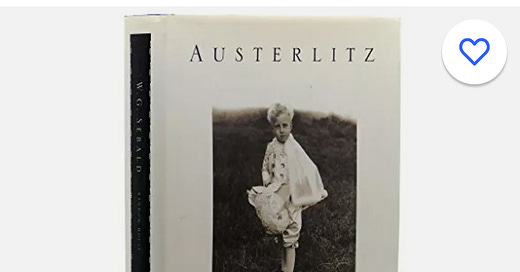My book proposal course starts in a few weeks! Learn more and sign up here
The persistent allure of the printed book might be one of the 21st century’s surprises. Far fewer people converted to ebooks than prophesied, and the boom in independent bookstores assumes an audience of readers who never choose between an audio, electronic, or paper form of a title they might read; paper is the only one on offer. Audiobooks are booming—the clear growth industry in books—but they are bought outside brick and mortar stores. It’s odd, in a way, that two relatively vibrant markets in an otherwise steady or declining industry, indie bookstores and audiobooks, are so separated.
There’s a recent trend within the print book market for special editions, something long predicted, re: vinyl in the age of streaming. There are of course stalwart traditional creators of lovely, lovingly produced high-end editions—The Folio Society is my favorite. The buzzy, flying-off-the-shelves version of this is the craze for “sprayed edges” that took root in the romance, fantasy, romantancy and other related genres currently dominating bestseller lists, but is also creeping into literary fiction, as the (who knew?) Sprayed Edges Section in Barnes & Noble reveals (Real Americans by Rachel Knong appears in it, as it does almost everywhere else books are being discussed right now). (Amazon has a section too). Fascinatingly, individuals are creating sprayed edges versions of books as well, so you can buy a bespoke collector’s editions of your favorite title, as seen in this Etsy shop.
Sprayed edges books are descendants of fore-edge paintings, and some of the people creating their own editions are working in the high end tradition as well, as with this $900 version of a recent Penguin edition of Jane Eyre.
I have learned a lot about the market for sprayed edges during my evenings spent perusing used books in various odd niches of the internet. It’s a weird game I play, a substitute of sorts for the afternoons I used to spend driving around the thrift stores of Cleveland (Pittsburgh thrifting isn’t as good, and I no longer own a car). Although I have tried, for years, to be a “collector,” I’ve realized that will never be me. I just like to find bargains and research pricing trends. So, for instance, I spend a lot of time on Mercari entering in unusual search terms to see what I might uncover. Sarah Maas and Rebecca Yarrow usually top the list highest priced, recently sold books.
It’s a good thing I wasn’t hunting for hidden, cheap Pushkins, because I might have purchased a forgery, as this article on this insane market reveals. I’ve seen many shocked reactions to the piece, but I was not surprised, because I’m accustomed to the consistent illogic of book collecting values. For the price of one sprayed edge Maas I could buy four books printed in 18th century America, as the market for those books is strangely moribund. I don’t even have to enter that many clever search terms to find books printed by Mathew Carey and Isaiah Thomas on eBay for under $100. I’ve been snapping them up.
Whether or not the Early American Imprints markets—once quite hot!—will come back I don’t know (should I try to pump and dump old J and J Harpers?). I have a pretty rotten track record trying to predict future old book values: my Richard Powers first editions haven’t amounted to much, nor did my Chabons, which I bought rather cynically in an attempt to predict future collectibles, and I completely whiffed the current Frank Herbert mania (check your shelves!) which I probably could have made out on had I been looking for them all those years in Cleveland Goodwills (ok truth be told I did flop one book club edition of Dune a few years ago—bought it for $1 and sold for $200—but I’m sure I passed over oodles more). I did make one recent score I am proud of: during the pandemic, in one of my first “check for hidden value in weird places online” phases, I bought a first edition of Erasure for $10 bucks on Amazon, and sold it last week for $365. Everett is not quite Pushkin-level, but it’s fun to keep guessing who might be next (look towards the newly minted oligarchs, the suddenly wealthy and nostalgic).
No one is “overspending” for a Rebecca Yarros sprayed edge special edition, even if it sells for less and less over the next few years, or for an Everett just made into a movie, or a stolen Pushkin. No one is paying too little for a 1557 book printed in Venice on Etsy, or a first edition of Sebald’s Austerlitz from the Silicon Valley Goodwill, though both would make great copy in a clever essay about the ironies of capitalism, or books, or cleverness. What the oddities of the old/rare/antiquarian/used/collectible book market reveal are simply the logic of all markets made intelligible to bookish types: there is none. It’s just vibes.
No matter how often I try to sit down and analyze this world that I’ve been looking over my shoulder at for years now (“you should write about this!” people tell me endlessly after I brag about some recent score), all possible theses dissolve under my fingers. Or maybe I resist making sense, preferring to be fascinated instead. Here’s to finding an authentic Pushkin in the wild, or taking a spray can and stencil to that book you just bought. Same thing.




Always such a pleasure to read these highly informed, deeply intelligent posts.
I have become an absolute sucker for special editions. I'm not willing to pay a humongous amount - I prefer to do book subscriptions where I get random special editions sent to me. Some of them are great books I wouldn't have read otherwise, and some of them are terrible, but the pain of buying a terrible book is eased by how pretty they are.